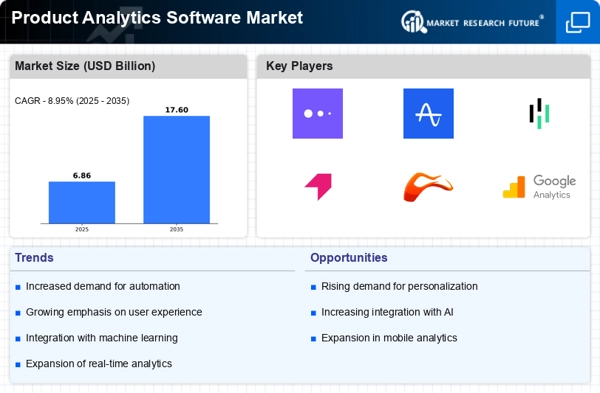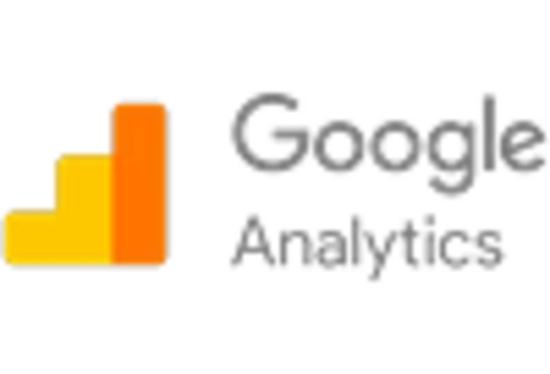Adoption of Cloud-Based Solutions
The shift towards cloud-based solutions is a significant driver in the Product Analytics Software Market. Organizations are increasingly adopting cloud technologies to enhance scalability, flexibility, and accessibility of analytics tools. This transition allows businesses to analyze vast amounts of data in real-time, facilitating quicker decision-making processes. Market data suggests that the cloud segment of the product analytics software market is anticipated to grow by over 25% in the coming years. This growth is attributed to the cost-effectiveness and ease of integration that cloud solutions offer, making them an attractive option for businesses of all sizes. Consequently, the demand for product analytics software that operates seamlessly in cloud environments is likely to increase.
Growing Importance of Data Security
In the Product Analytics Software Market, the growing importance of data security and compliance is becoming a critical driver. As organizations collect and analyze vast amounts of customer data, ensuring its protection has become paramount. Regulatory frameworks and consumer expectations regarding data privacy are evolving, prompting businesses to invest in analytics solutions that prioritize security. Market analysis indicates that companies focusing on data security in their product analytics software are likely to gain a competitive advantage, as consumers are more inclined to trust brands that demonstrate a commitment to safeguarding their information. This trend is expected to propel the demand for secure product analytics software solutions.
Integration of Advanced Technologies
The integration of advanced technologies such as artificial intelligence and machine learning is transforming the Product Analytics Software Market. These technologies enable more sophisticated data analysis, allowing organizations to uncover deeper insights and predictive analytics capabilities. As businesses seek to harness the power of big data, the demand for product analytics software that incorporates these advanced technologies is expected to rise. Market forecasts indicate that solutions featuring AI and machine learning capabilities could see a growth rate of 30% over the next few years. This trend highlights the necessity for companies to adopt innovative analytics tools to stay competitive in an increasingly data-driven landscape.
Increased Focus on Customer Experience
In the Product Analytics Software Market, there is a growing emphasis on enhancing customer experience. Companies are increasingly utilizing analytics tools to understand customer preferences and behaviors, which in turn informs product development and marketing strategies. The ability to analyze user interactions and feedback allows businesses to tailor their offerings to meet customer needs more effectively. This trend is reflected in the market data, which indicates that organizations prioritizing customer-centric approaches are likely to see a 15% increase in customer retention rates. As a result, the demand for product analytics software is expected to rise, as companies seek to leverage insights for improved customer satisfaction.
Rising Demand for Data-Driven Decision Making
The Product Analytics Software Market is experiencing a notable surge in demand as organizations increasingly recognize the value of data-driven decision making. Companies are leveraging analytics tools to gain insights into customer behavior, product performance, and market trends. According to recent estimates, the market for product analytics software is projected to grow at a compound annual growth rate of approximately 20% over the next five years. This growth is driven by the need for businesses to enhance their competitive edge through informed strategies. As organizations strive to optimize their offerings, the adoption of product analytics software becomes essential, enabling them to make timely and effective decisions based on empirical data.


















Leave a Comment